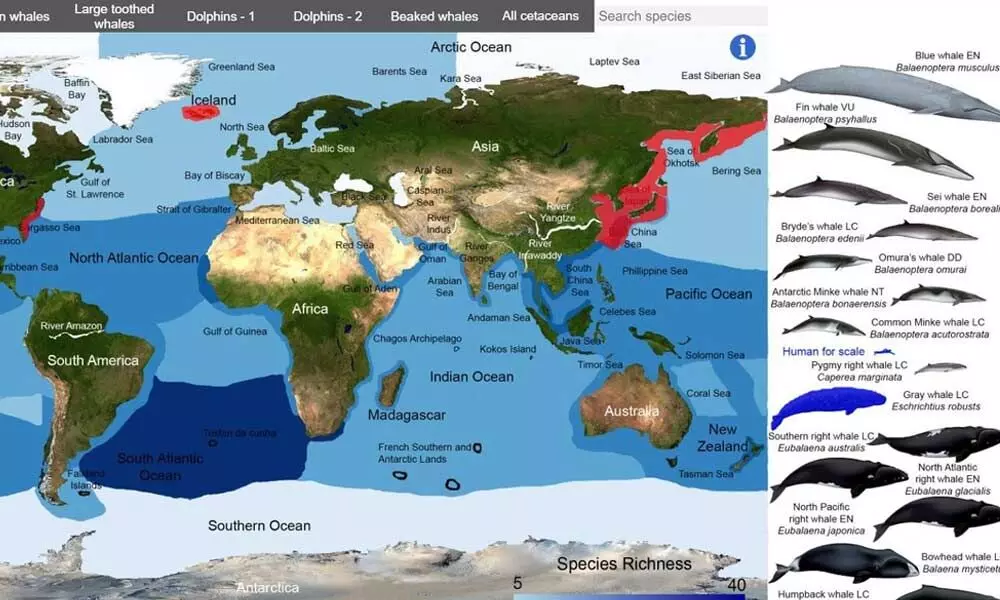Researchers create world of whales, dolphins on website

Researchers create world of whales, dolphins on website
Unraveling mysteries of the world often requires one to look at things in new and summarised ways
Bengaluru: Unraveling mysteries of the world often requires one to look at things in new and summarised ways. Researchers at National Centre for Biological Sciences (NCBS) Bengaluru and IIT Kharagpur have developed a website and an immersive storytelling tool where one can interactively learn about where the different species of whales, dolphins, and porpoises (together referred to as cetaceans) are found in the world.
It can also tell you how many, and what species are found around your country along with other facts that can induce a sense of how majestic these animals are. And all this is just with the click of a button!
Cetaceans generally occur in coastal seas and open oceans, so very little is known about most of the 90 odd species to scientists, let alone to the common man. Researchers have collated maps for each species created by the International Union for Conservation of Nature (IUCN) and condensed them into a single page which updates and highlights relevant sections with the movement of your mouse pointer.
This way of looking at information helps you compare different species/areas and helps you explore migratory patterns of various cetaceans. For example, the famous humpback dolphins of India are actually two species occurring along the eastern and western coasts respectively.
The website also shows that Indian waters harbour more than 25 species of cetaceans! From teaching school kids to searching for interesting patterns, the website is a one-stop for all.
"A curious mind is a prerequisite for research and innovation. With so many cetaceans, several with dwindling or little-known populations, inculcating curiosity towards them is the first step towards knowing and saving them. And I hope this website would aid in facilitating it." says Divyashree Rana, a research consultant with WWF-India, who has been closely associated with the project.
In India particularly, where the tiger has become the sole symbol for wildlife, it is imperative to let people know that their seas and coasts are just as diverse. And that the beautiful whales and dolphins they watch on television channels also occur in their backyard.








